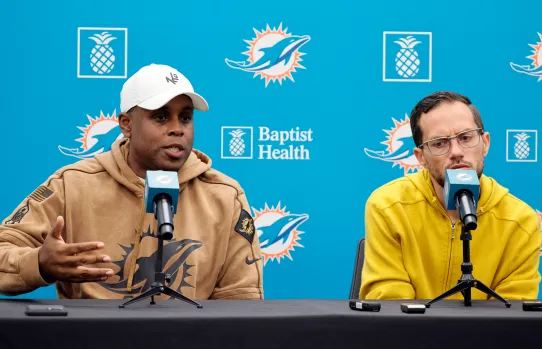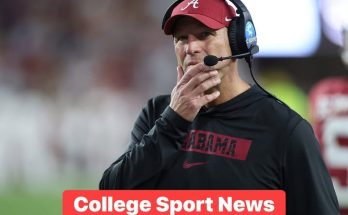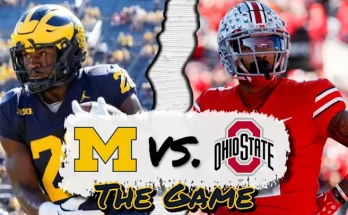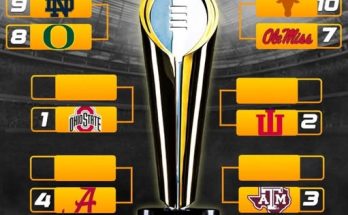Miami Dolphins Making Moves to Free Up Money in Salary Cap: Strategic Moves for Future Success
The NFL is a fast-paced, high-stakes environment where teams are constantly working to balance their rosters while navigating financial challenges. For the Miami Dolphins, a team that has undergone significant changes in recent seasons, managing the salary cap effectively is key to building a competitive team for the future. With the 2025 NFL season fast approaching, the Dolphins have been actively making moves to free up cap space and ensure they remain competitive in the AFC East.
The Importance of Salary Cap Management in the NFL
Salary cap management is an essential element of team-building in the NFL. Each team has a cap limit, which dictates the total amount of money they can spend on player salaries each year. In 2025, the cap has risen to around $250 million per team, but that doesn’t mean every team is able to spend to that limit. Teams must balance their immediate needs with long-term financial stability, making it necessary to plan for both short-term success and future sustainability.
For teams like the Dolphins, who are trying to build a contender, managing the cap space efficiently is critical. Every decision, from contract restructures to player releases, impacts a team’s ability to remain flexible, pursue high-level free agents, and retain core players. The Dolphins, in particular, have made several notable moves to improve their cap situation in the lead-up to the 2025 season.
Offseason Moves to Free Up Cap Space
The Dolphins have been aggressive in their offseason approach, with general manager Chris Grier at the helm, making strategic decisions that will pay dividends in the long run. Here are some of the significant moves that Miami has made to free up money in the salary cap:
1. Restructuring Tua Tagovailoa’s Contract
One of the most important and high-profile decisions the Dolphins made was restructuring the contract of their starting quarterback, Tua Tagovailoa. Tua, who was drafted by the Dolphins in the 2020 NFL Draft, has shown flashes of brilliance but has also dealt with injury concerns. Despite the uncertainty around his long-term health, Tua remains the centerpiece of the franchise.
In February 2025, the Dolphins restructured Tua’s contract to convert a significant portion of his salary into signing bonus money. By doing this, they were able to spread out his cap hit over the next few years, freeing up over $10 million in cap space for the upcoming season. This restructuring not only gives the Dolphins more breathing room but also provides them with the flexibility to bolster other areas of the team, such as the defense or offensive line.
While this move does push money into future seasons, it reflects Miami’s confidence in Tua as the future of the franchise and their willingness to build around him. It also allows the team to continue to build the roster without sacrificing too much cap space in the immediate term.
2. Cutting or Trading Older Veterans
The Dolphins have made a conscious decision to part ways with some of their older, higher-paid veterans to open up room for younger players or free-agent acquisitions. The most notable of these moves came when the team released cornerback Byron Jones in a move that saved Miami over $13 million in cap space.
Byron Jones, who was once one of the highest-paid cornerbacks in the league, struggled with injuries and a drop-off in performance over the last couple of seasons. His contract was considered a significant burden on the cap, and his release allowed the Dolphins to allocate resources elsewhere. Though Jones was a key part of the defense when he was healthy, the team’s decision to move on from him was a clear sign that Miami is looking toward the future.
The Dolphins also traded running back Raheem Mostert, freeing up additional space. Mostert, while explosive at times, was often injured and did not fit into the long-term plans of the team. Trading him helped to solidify Miami’s commitment to rebuilding with a younger, faster roster. These moves not only saved money but allowed the Dolphins to focus on building a stronger roster by investing in areas where they can gain a competitive edge.
3. Dealing with Tight End Contract Situation
Tight end is a key position in the Dolphins’ offense, but the team’s commitment to veteran tight end Mike Gesicki became a point of contention. Gesicki, who was drafted by the Dolphins in 2018, had a solid career with the team, but his inconsistent production and the emergence of other tight ends on the roster made him expendable.
In an effort to free up space, the Dolphins traded Gesicki to a team in need of a receiving threat at tight end, moving his $10 million salary off the books for the upcoming season. While Gesicki’s departure stings in terms of the depth chart, the Dolphins’ front office is betting on a more cost-effective tight end group that fits better within their system.
In return for Gesicki, Miami was able to add a draft pick, which further helps the team replenish its roster with young talent and manage its cap in the process. This strategic move showcases the Dolphins’ commitment to reshaping the team while maintaining financial flexibility.
4. Restructuring Contracts of Key Veterans
Several key players in the Dolphins’ locker room agreed to contract restructures in order to create cap space. These include star defensive lineman Christian Wilkins and offensive tackle Terron Armstead. Both players have been instrumental to the Dolphins’ success, and their willingness to restructure their contracts allowed the team to retain them while freeing up valuable space for the 2025 season.
Christian Wilkins, one of the best defensive linemen in the league, restructured his deal to free up approximately $7 million in cap space. This was an essential move for Miami, as the defensive line is one of the team’s most important areas of focus. Wilkins’s ability to collapse the pocket and disrupt opposing offenses is vital for Miami’s defensive success. By reworking his deal, the Dolphins ensured they kept one of their cornerstones in place while still being able to add new pieces around him.
Similarly, veteran offensive tackle Terron Armstead agreed to a restructured deal that lowered his immediate cap hit. Armstead is a crucial part of Miami’s offensive line and was instrumental in protecting Tua Tagovailoa during the 2024 season. By modifying his contract, Miami was able to reduce his cap hit for the season while maintaining his presence on the line.
These contract restructures are a clear sign that the Dolphins are committed to keeping their core players while finding ways to navigate the financial constraints of the salary cap.
5. Targeting High-Value Free Agents
As the Dolphins cleared cap space, it became clear that they were positioning themselves to make a splash in the free-agent market. With the extra room, Miami could target high-value players to improve their roster and further elevate their chances in the AFC East.
The Dolphins signed several mid-tier free agents to contracts that fit their new salary structure, focusing on players who could come in and make an immediate impact without breaking the bank. This includes bringing in a veteran safety to shore up the back end of their defense and a wide receiver to complement the existing group. Miami’s focus was on obtaining players who could contribute right away but not over-extend their financial commitments for the future.
Additionally, the Dolphins had the financial flexibility to be active during the trade deadline, acquiring a key pass-rusher from another team. This trade, which sent some draft picks in exchange for an established player, further demonstrates how the Dolphins are balancing the need to strengthen their roster for immediate contention while staying within their salary cap constraints.
6. Long-Term Vision and Draft Strategy
Freeing up money is not just about m



